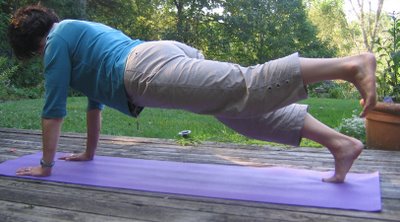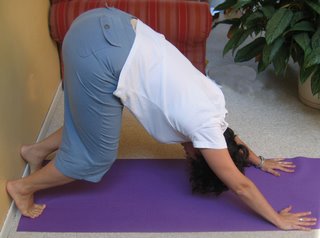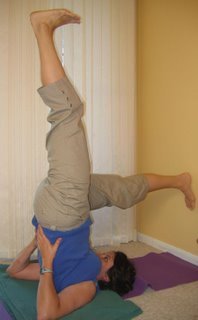
The meditations I participated involved almost an hour of the drones and blasts of their various instruments, which gave me the giggles at first. Once I began to let the sound wash over me, the music and chanting became a place to focus my attentions and soon my breath began to slow and I was able to settle my thoughts. Here are a couple of breathing exercises that can help quiet the mind, whether you are in the presence of these calm, peaceful men or not.
“Loop” breathing and Exhale lengthening
For either exercise, find a comfortable position you can stay in for awhile—maybe Savasana or Sukhasana against a wall. You want to be able to release your entire body into the support of the floor or the wall so you can concentrate on your breath. Give yourself a few moments to really settle into your position and let the breath start to slow.
1. “Loop” breathing-Pay attention to the beginning and end of each breath. Notice how much “silence” there is at the end of each inhale and exhale; the moment when there is no breath at all. On the next cycle, try to imagine your breath as a loop and let the exhale begin as soon as the inhale finishes, so there is no stopping. This will be a bit jerky at first, especially between the exhale and inhale (it is easier to let full lungs empty than to begin filling them again). Imagine the cycle as an oval, with the transitional points at each end and visualize the breath moving smoothly around those curves during the transition. Continue this for a while (5-10 mins.) and then let your breath return to its normal pattern.
2. Exhale Lengthening-After relaxing with your normal breath, start to notice the length of each inhale and exhale and count the seconds. Are they the same counts or is one longer? Try to bring the breath to an even number of counts, so the in- and exhale take the same amount of time. After a few even breaths, try to add a single count to the exhales. Continue with that for awhile and then add another count. Continue with that and, after awhile, if it feels okay add another count so that the exhale is 3 counts longer than the inhale. Continue with that until you are ready to stop and let your breath return to normal, maybe giving a big sigh to break the counting cycle. Rest until you are ready to finish the exercise, than slowly roll to the side and push yourself up to sitting.
(If you are interested in more information about current research being done on the effects of meditation, this NPR article is a good place to start.). ©Brenda K. Plakans. All Rights Reserved.









